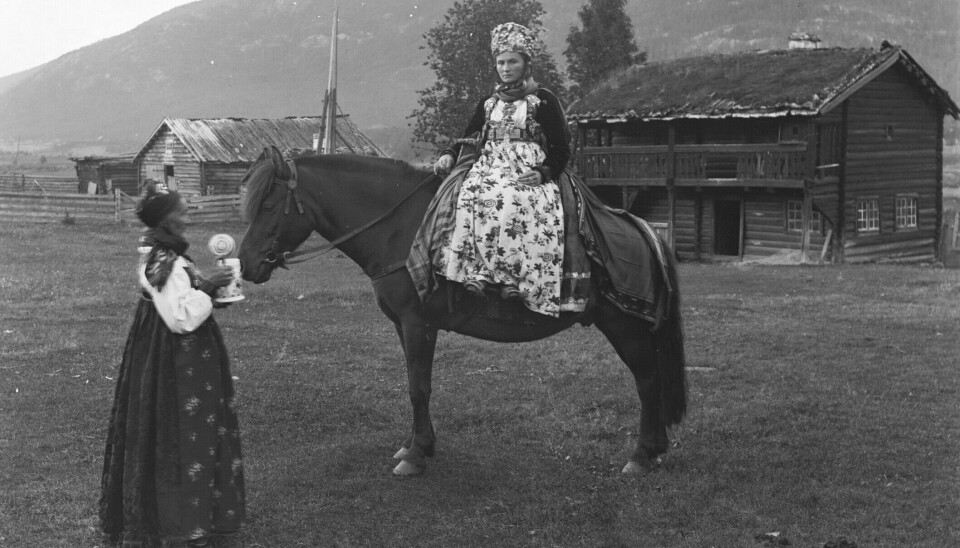
19th century Norwegian wedding celebrations are hard to match
A bride and groom who were to marry 200 years ago observed many rules and traditions.
We are well into this year's high season for weddings and all that they involve in the way of speeches, good food and long summer evenings.
Weddings are an age-old tradition, and in the 19th century wedding celebrations were at their height. Most of us have heard of old-fashioned farm weddings, but what exactly went on at them?

Ethnologist Linda Stewart has written the book Bryllup i Norge: om bondebryllup og dagens bryllupsfeiring - ‘Weddings in Norway: country weddings and wedding celebrations of the times.’33 She relates that a wedding in the 19th century was quite different from today.
“Weddings were big events, lasting three days, and had many more rules than we do today. They included rules for who should be invited, where they should sit, what they should eat and what the guests should give as gifts.”
Three days long
On the first wedding day, often just called the wedding day, the actual marriage vows took place, followed by a formal dinner quite similar to what we are familiar with today. However, this was only the beginning of the celebration.
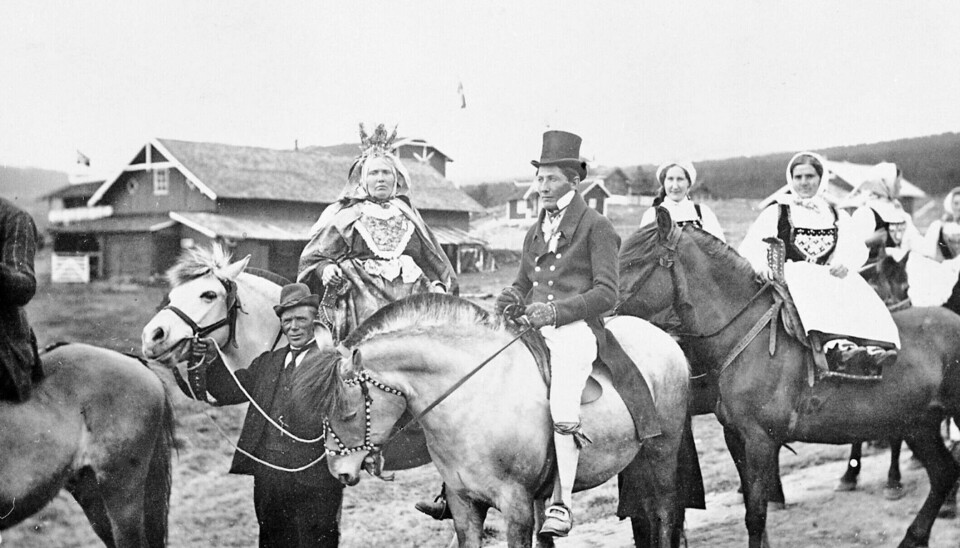
The second wedding day was the day for toasts, gift giving and yet another festive dinner. This day was called grautdagen meaning porridge day, and it was also the day when the guests presented their skålgaver – gifts of money or other help to the bride and groom – in a bowl that was carried around. Skål means bowl.
The third and final wedding day was called departure day, but before the guests packed their things and went home, it was time for the stabbedans, a dance in which couples starting with the newlyweds sat on a stump while guests danced around them in a circle.
Stewart writes that the most lavish weddings are rumoured to have lasted up to seven days.
Not everyone could afford such elaborate celebrations, so weddings such as these took place only in the wealthiest 19th century families.
“Well-to-do farmers wanted to show their wealth through weddings, and having a long-lasting wedding created status.
Weddings lasting more than four days added rest days. The bride and groom would visit friends, family and those who were sick and had not been able to join in the celebration.
Layers upon layers
The bride was to be dressed according to local tradition, and it was important for everything to be properly done.
“The bridal crown was undoubtedly the most expressive part of the bride's outfit. It was the very symbol of her purity and virginity,” says Stewart.
The silver crown came into use at the end of the Middle Ages, with the Virgin Mary's crown as a model. The rules therefore did not allow non-virgins, pregnant women or widows to wear the crown.
The bride also wore other jewellery, such as a silver belt and ideally silver buckles on her shoes.
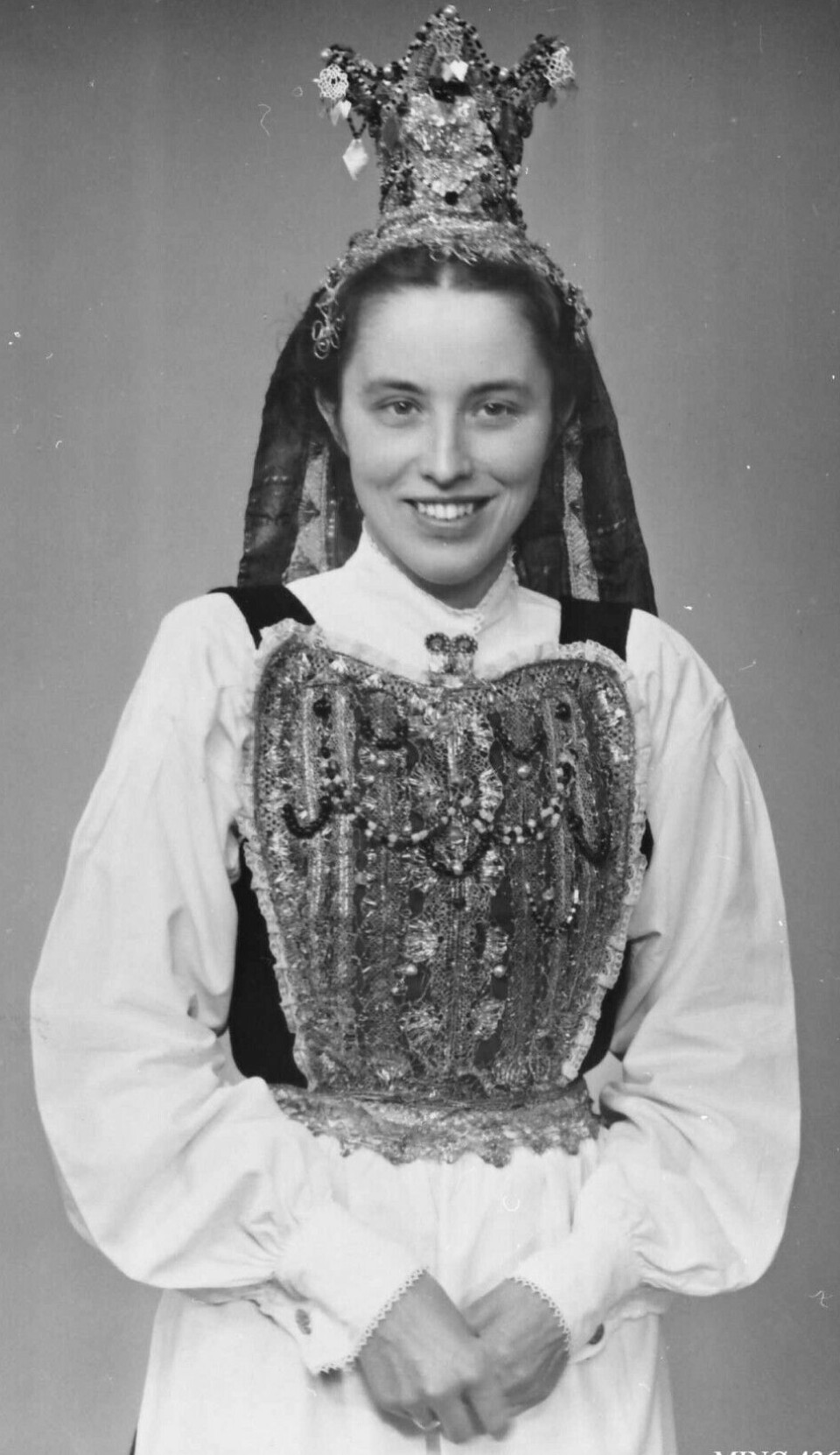

“It was customary to put a silver coin in one shoe, as protection against evil spirits,” Stewart says.
Wedding attire was about showing off the very finest things you owned of jewellery, silver and clothes.
“It was also common to wear layers upon layers on top of each other. In Sauherad in Telemark county, the bride’s skirt was to be so wide that she almost filled the church door," Stewart says.
The traditional folk dress as a wedding dress came to an end in many places during the 19th century. White became a popular colour in Europe and the white wedding dress was introduced in Norway around the time of the First World War.
The groom could wear the local folk costume or a suit. He was supposed to wear some silver in the form of buttons on his waistcoat, trousers or around his hat.
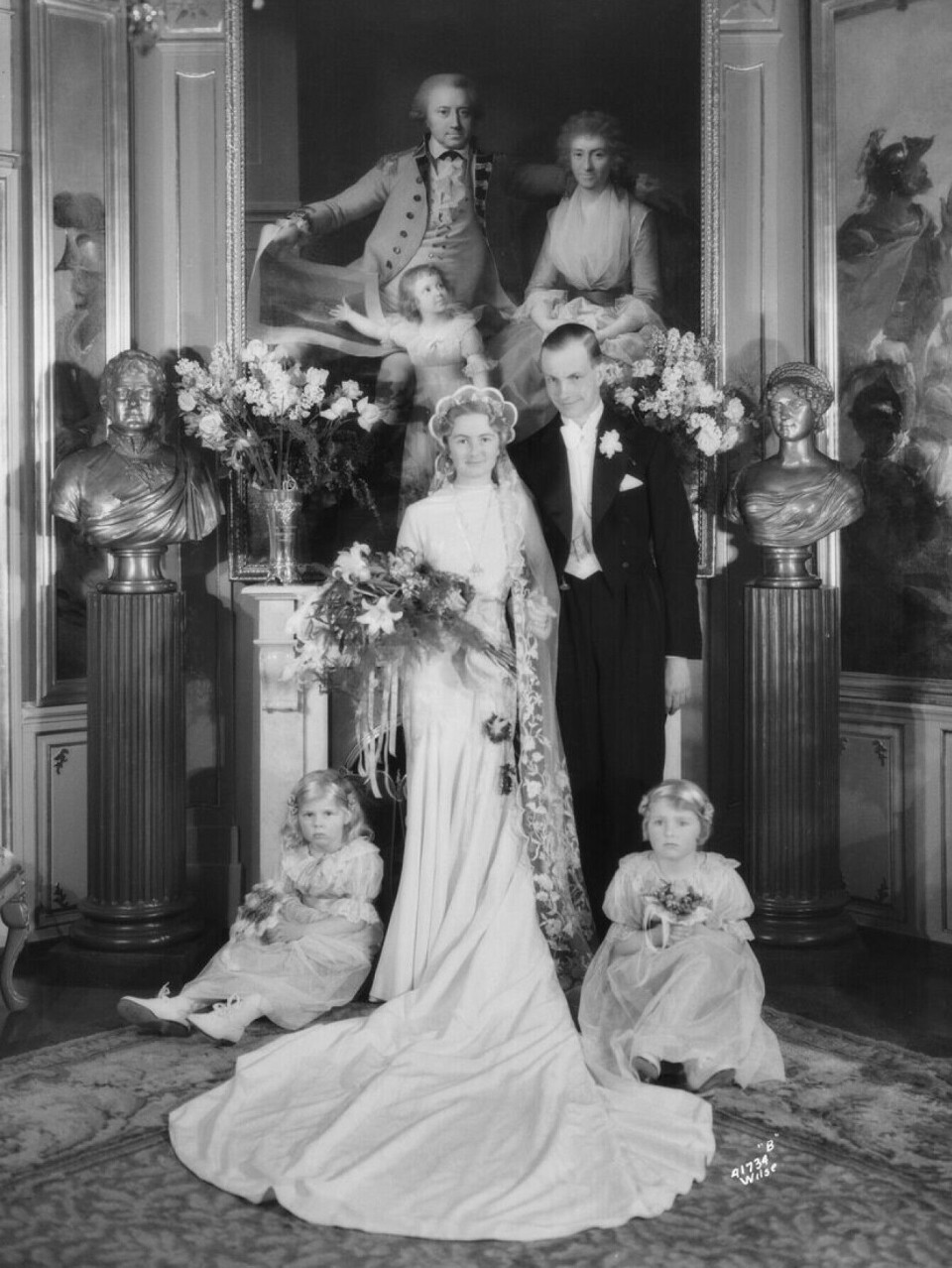
Marked power relationships
Today, the bride and groom determine who is on the guest list.
This was not the case in the 19th century.
“Every farm was part of a bearlag consisting of a certain number of neighbouring farms, which you were obliged to invite to the wedding. It was also common to invite relatives and friends who had moved from the village,” Stewart writes.
Rank was an important key word in country weddings. The ranking of the guests was expressed in several ways at a wedding. Where the guests were allowed to sit during the meals said a lot about their status, but the order of the guests on the bridal procession to and from the church was also taken seriously.
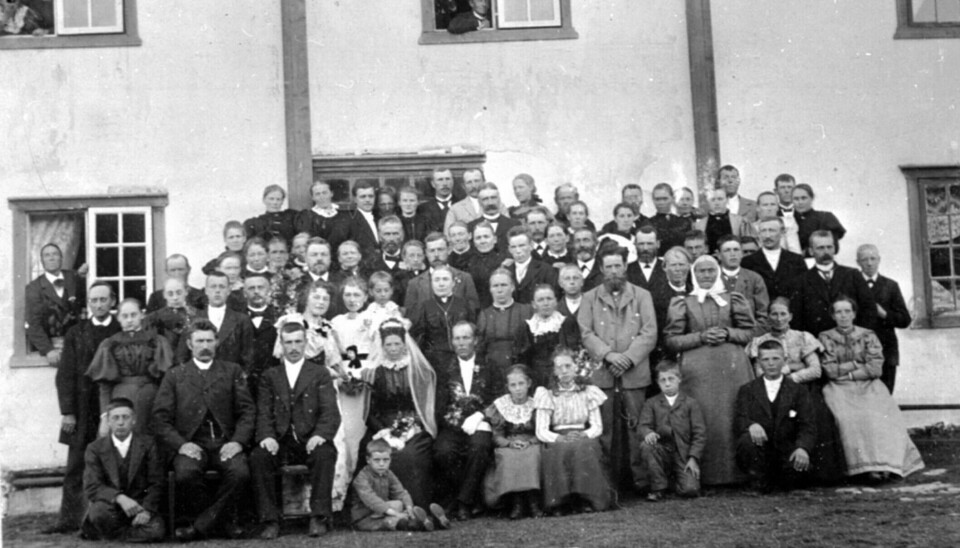
“These weddings greatly contributed to confirming and reinforcing mutual power relationships in the village,” says Stewart and adds that the less well off in the villages also tried to arrange weddings in the pattern of the wealthy, only on a smaller scale.
The more prosperous could also cover the cost of the entire wedding of the farm boy or contribute household goods for the servant girl. It was not unusual for poor people to get married after the bride and groom’s more prosperous wedding.
“They participated in the celebration, but did not receive any gifts,” writes Stewart.
Clear guidelines for gifts
Skålegaver were the wedding gifts of the time, but unlike today, where we create an online gift registry or ask for money for a great honeymoon, traditional country weddings had clear guidelines for gift giving.
In addition to contributing a basket of food for the celebration, guests brought money as a gift for the newly married couple.
On the second wedding day, the bride and groom sat in the high seat at a long table with a finely decorated bowl or a silk handkerchief in front of them. The guests came up to the bride and groom according to rank with their monetary gift.
A fiddler played to get people in the right giving mood. The amounts given were called out, and the guest received a dram as a thank you.
“Couples were not always completely satisfied with what they received as gifts,” says Stewart, who heard a story from around 1867 in Nesna in Nordland county.
A servant girl was invited to the wedding but was not able to come until the evening. She gave one krone as her gift, whereas it was common for girls who attended the whole party to give two kroner.
“The groom is said to have become so angry that he stood up and said: ‘If you don't have any more to give, you should just keep it yourself!’ And thereupon he threw the coin back to her.”
The money received by the bride and groom was important for the couple's ability to take over a farm. Before banks became common, this was the most usual way to obtain a long-term loan.
Food for hangovers
Food plays a central role in a wedding, and this was also the case 200 years ago.
These weddings, which often lasted for several days, obviously included a number of meals.
It was common to serve finger foods, such as bread, butter, cheese and possibly cold meat spreads, on the first wedding day before the bridal procession. For dinner, the guests typically enjoyed meat soup and home-brewed beer with the meal.
On the second day, the bride changed into her new-wife dress and a headdress to signify that she was now married. Her hair could no longer be loose and had to be hidden under her headgear or put up.
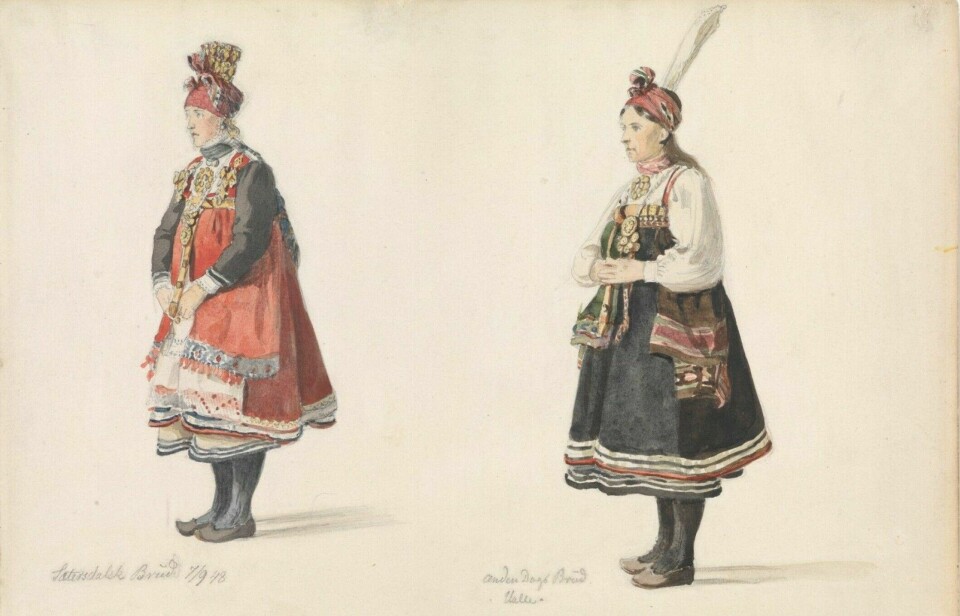
For breakfast, the guests received traditional soft flatbread called lefse and slices of bread that were piled high on large tin dishes. The spreads were on the table in nice arrangements, along with waffles and cakes. Beer was also served at breakfast.
“Some places also served a dish called ‘small meat’ for breakfast, which was minced veal that was supposed to help with hangovers,” says Stewart.
Porridge made with sour cream or butter was served for dinner on the second day. The food that was served on the third and last less formal day were often leftovers from the previous meals.
Shoes stolen at night
Wedding days were not only characterized by food and gifts, but also dancing and games.
As in modern weddings, the bride and groom took the first dance, and dancing continued throughout the evening. A special drink was often made for the most enthusiastic dancers. They were served coffee with sugar and brandy or heated home-brew with sugar.
“It was also common to have various role plays, quiz games and word games to entertain the guests.”
Another highly popular activity was for some of the guests to dress up as goat bucks and entertain the other guests with wild antics.
When the guests slept at night, the youth liked to sneak around and steal shoes. They would hang them up in a tree, and the next morning they auctioned them off.
A tradition in almost all country weddings was the stabbedans, a dance on the third wedding day.
“A large log was dragged into the living room or out into the yard in the summer. The bride and groom first had to climb onto the stump, have a dram and dance.”
Other couples then proceeded to do the same in turn.
After the dance, it was usually time to say thank you and return home.
———
Read the Norwegian version of this article at forskning.no



































